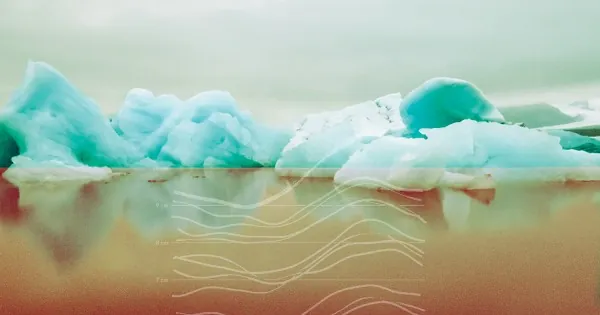
Sacred Waters and the Alarming Meltdown of Arctic Ice
2025-01-09
Author: Ming
Introduction
In an era where climate change looms large over the globe, the ancient practices of baptism from Iceland’s Grágás, an invaluable legal codex from the eighth to thirteenth centuries, still resonate. These age-old traditions reveal deeper connections between humanity and the environment, particularly through the concept of baptism in non-traditional waters, like the snow or even the ocean, which was deemed acceptable for giving a sick child their sacramental rite. These customs remind us not only of cultural identity but also of a spiritual bond with nature.
The Climate Crisis and Cultural Loss
However, as glaciers and sea ice rapidly recede, the stark reality of our climate crisis becomes apparent. The world is uninterruptedly losing these frozen landscapes, akin to how religious rites and traditions may decline under modern pressures. Andri Snær Magnason, a renowned Icelandic poet, reflects on this relationship between our identity and the melting ice in his book, *On Time and Water*, asserting that glaciers serve as frozen manuscripts of history. They hold narratives waiting to be deciphered, revealing truths about our environmental past. As Magnason eloquently puts it, our exploration of glaciers—a reflection of our historical ties—can offer critical insights into our present predicaments.
Indigenous Voices and Environmental Degradation
This cultural loss and environmental degradation falls heaviest on Indigenous communities like the Sámi and Inuit, who depend on the fragile ecosystems that are now at risk of vanishing. Their lives are interwoven with the health of the planet, making their voices essential in the global fight to restore both nature and culture.
Reassessing Baptismal Practices
There’s an urgent need to reassess our baptismal practices and the broader implications they carry amidst the backdrop of climate change and colonial histories. Theologians increasingly acknowledge that baptismal waters are not merely ritualistic; they embody the sacred wisdom stemming from community traditions. Brazilian theologian Cláudio Carvalhaes emphasizes this interconnectedness, suggesting that baptism transcends church confines, weaving into the very fabric of a community’s life and environment.
Community-Centric Baptism Today
Community-centric baptism is especially prominent in Northern Norway and Iceland today. Indigenous customs—such as Sámi emergency baptisms traditionally performed in local water sources—demonstrate a resilient link to land and spirituality that persists. Water, in this context, is not only for purification but also for safeguarding cultural identity and enacting blessings.
Sámi Perspectives on Sacred Waters
Bierna Bientie, a theologian from the Sámi community, captures this essence, illustrating how their traditions attribute sacredness to local waterways. The focus shifts from the conventional Christian themes of sin to notions of protection and belonging, signifying a profound respect for the environment that nurtures them.
Historical Context of Baptism in Iceland
Historically, Icelanders have also embraced geothermal water in their baptismal rituals, especially during the initial Christianization around the year 1000, when the populace collectively chose Christianity. Unwilling to baptize in the frigid waters, individuals sought the comforting heat of natural springs, intertwining sacred rites with the healing properties attributed to water.
Modern Practices and the Importance of Water
Reflecting on these traditions like the communal pool observed by Carvalhaes in Mexico, Icelandic practices illustrate a harmonious existence with nature. Today, the use of baptismal water to bless new homes—portrayed through acts of pouring water for protection—further underlines the enduring sacredness we assign to these life-giving resources.

 Brasil (PT)
Brasil (PT)
 Canada (EN)
Canada (EN)
 Chile (ES)
Chile (ES)
 Česko (CS)
Česko (CS)
 대한민국 (KO)
대한민국 (KO)
 España (ES)
España (ES)
 France (FR)
France (FR)
 Hong Kong (EN)
Hong Kong (EN)
 Italia (IT)
Italia (IT)
 日本 (JA)
日本 (JA)
 Magyarország (HU)
Magyarország (HU)
 Norge (NO)
Norge (NO)
 Polska (PL)
Polska (PL)
 Schweiz (DE)
Schweiz (DE)
 Singapore (EN)
Singapore (EN)
 Sverige (SV)
Sverige (SV)
 Suomi (FI)
Suomi (FI)
 Türkiye (TR)
Türkiye (TR)
 الإمارات العربية المتحدة (AR)
الإمارات العربية المتحدة (AR)